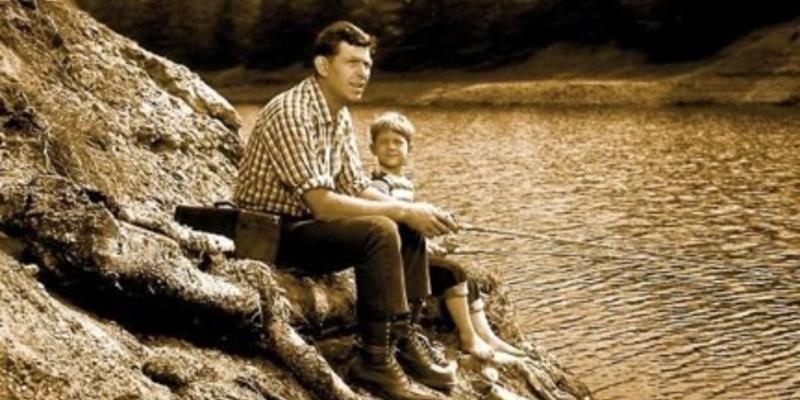

I don't buy them, but I do pick up the mag rags while waiting in the checkout aisle. I mostly focus on them to keep from grabbing a bag of peanut M & Ms. They are the extent of my pop culture indulgence.
This past week, I noticed that Andy Griffith's death secured a small photo caption in a sidebar next to the full cover headline—"How Katie Beat Tom"—referring, of course, to the divorce of Tom Cruise and Katie Holmes. Some would argue their divorce is reality and newsworthy. But in comparison to Andy Griffith? He was an acclaimed actor for more than half a century, his name symbolized the fictitious town of Mayberry, North Carolina, and all its colorful characters, the nirvana of Main Street American living. And he made an impact. Lest you think I'm just waxing nostalgic, or bucking today's big stories, consider this.
There is such a little town. Mt. Airy, North Carolina has all the allure of Mayberry, and not by accident. It was Andy Griffith's hometown (one of my favorite fall weekends in North Carolina was spent at the Mayberry Festival). You'll find a number of tributes to the screen version: Floyd's City Barber Shop, The Mayberry Inn, Mayberry Bed & Breakfast, Andy's Homeplace Bed & Breakfast, The Andy Griffith Museum, The Andy Griffith Theater, Aunt Bea's Barbeque (intentionally misspelled), Aunt Bee's Room, Wally's Service Station, Bluebird Diner, Old Mayberry Jail, a true-to-life Barney impersonator, a paddywagon to haul off the town drunk Otis, a replica of the police car that Andy drove, and a life-sized bronze statue of Andy and Opie headed off for their fishing trip. The Mayberry parade even kicks off so-called "Mayberry Days" honoring its reigning Pickle Queen, symbolizing Aunt Bee's quest for the elusive Blue Ribbon for her canning, cooking, and baking conquests.
Despite all its charms, Andy Griffith for decades dismissed any ties between The Andy Griffith Show and his hometown of Mt. Airy. He didn't publicly return to his home until 45 years later for a dedication of his namesake highway, where he finally gave the town the validation it deserved.
To me, the best part of this story is that Mt. Airy didn't wait for his validation to turn into what it was meant to be. The economy of this area was in textiles and furniture, its commerce drying up and rolling out of town like tumbleweed. Waiting wasn't an option. We are always going to be waiting for something, aren't we? The shoe to drop, the bottom to fall out, the car to reach 100K miles, the kids to move out, the alarm to go off, the sun to go down, the sun to come up, the fish to get on my line, the phone to ring, the Mayan calendar to expire, Jesus to come. Mt. Airy could be a ghost town today (if on the map at all) if it wasn't for someone picking up a fragment of hope, a fragment of story, and building on it.
What kept this town alive was the hope of being that sleepy little fictitious town, where men and boys whistle while they walk with cane poles to fishing holes, life slows down, and everyone lives in the moment.
Mayberry had its problems, maybe things weren't all that good—but that's life, right? Aunt Bee's pickles were terrible, Goober spouted expletives while busting his knuckles in his garage. Andy lost his wife and was a single dad, Aunt Bee was a widow living with her son, Floyd lost at love, Barney was insubordinate at best. Yet, we loved everything about all of them. What the show did focus on was all that was good.
I remember days after 9/11, I found solace in this show. The whistling at the beginning of the Andy Griffith show was a soothing salve on frazzled nerves. A half hour with Andy, Barney, and Opie, and I am ready to unplug that phone that isn't ringing with the job offer, make that peanut butter sandwich, and walk down a dirt road barefoot. I can't imagine screenwriters fabricating a documentary on Katie Holmes and Tom Cruise that would be comparable.